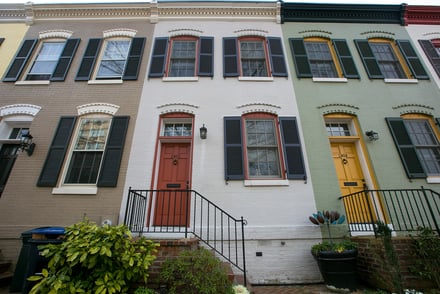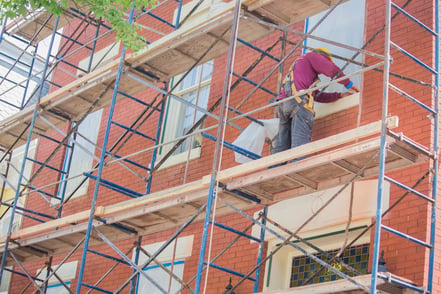 The warm August days are the perfect chance to sit outside and sip a cool drink. But whether you are sitting on your urban patio or your front stoop, it’s a good idea to take a moment and consider your historic brick steps. Are they structurally sound? Are they aesthetically pleasing, but more importantly, are they safe? Or are they looking a little run down or suffering from small problems that could balloon into hazards and costly repairs? A quick mid-summer inspection can identify problems and give you plenty of time to have them repaired before winter comes.
The warm August days are the perfect chance to sit outside and sip a cool drink. But whether you are sitting on your urban patio or your front stoop, it’s a good idea to take a moment and consider your historic brick steps. Are they structurally sound? Are they aesthetically pleasing, but more importantly, are they safe? Or are they looking a little run down or suffering from small problems that could balloon into hazards and costly repairs? A quick mid-summer inspection can identify problems and give you plenty of time to have them repaired before winter comes.
The Importance of Inspecting Your Historic Brick Steps in the Summer
 Due to the wear and tear on the front steps, it’s common for small chips and cracks to occur. Although they may not seem like a big deal, water from rain and snow can worsen problems with historic brick, especially when subjected to winter’s freeze-thaw cycle. Thankfully, summertime inspection and repair can limit water issues, spalling, crumbling, and other damage. This eliminates safety hazards that can lead to trips and slips, making your home safer for you and your guests.
Due to the wear and tear on the front steps, it’s common for small chips and cracks to occur. Although they may not seem like a big deal, water from rain and snow can worsen problems with historic brick, especially when subjected to winter’s freeze-thaw cycle. Thankfully, summertime inspection and repair can limit water issues, spalling, crumbling, and other damage. This eliminates safety hazards that can lead to trips and slips, making your home safer for you and your guests.
During your inspection, you’ll want to look for chipped, cracked, crumbling, or loose mortar and bricks. Additionally, look for uneven bricks and any signs of pooling water, which can indicate the slope of your steps is no longer correct. A proper slope should be nearly imperceptible, so take a step back and determine if your historic brick steps are still straight, ensuring there is no appearance of any leaning or tilting.
Consider Iron Railings for Added Curb Appeal and Safety
Adding or repairing iron railings can significantly improve the functionality and safety of your historic brick steps while adding visual interest and enhancing curb appeal. A secure railing decreases the likelihood of slips, trips, falls, and injury. Not only will an iron railing keep everyone safe, but it will look beautiful on its own in any season. Aesthetically, it also provides the opportunity to add additional decorations for charming seasonal displays.

Proper Historic Home Brick Repair is Critical to Success
Historic brick steps and ironwork repair or installation are specialized trades for good reasons. Modern materials are incompatible with historic brick and can cause extensive damage to your home. Traditional tuckpointing methods must be combined with traditional lime-based mortar to preserve your historic home’s beauty and structural integrity. This mortar is designed to work with the softer nature of historic brick. Modern mortar’s compressive strength will exert too much pressure on the brick, causing cracking and crumbling. In short, modern materials will create the problems you are trying to eliminate.
Historic brick contractors will expertly maintain the beauty of your front steps, and add value while ensuring you remain safe with effective repairs that will last a long time. Choosing a specialized contractor means the proper techniques and tools will be used, as well as providing access to the right materials. By carefully reusing existing bricks and sourcing matching bricks where necessary, you won’t end up with a mismatched patchwork of repairs. Instead, your steps and railing will look like they’ve been flawless for as long as your home has been standing, and will continue to provide curb appeal for years to come.
Contact Renaissance Development, the experts in tuckpointing for historic brick houses in Washington, D.C. and the surrounding area.
Tags:
front steps, brick steps, handrails, tuckpointing, historic brick, Historic Brick Home DC, Ironwork, Ironwork Repair, Ironwork Restoration, exterior tuckpointing8/1/24 8:00 AM


